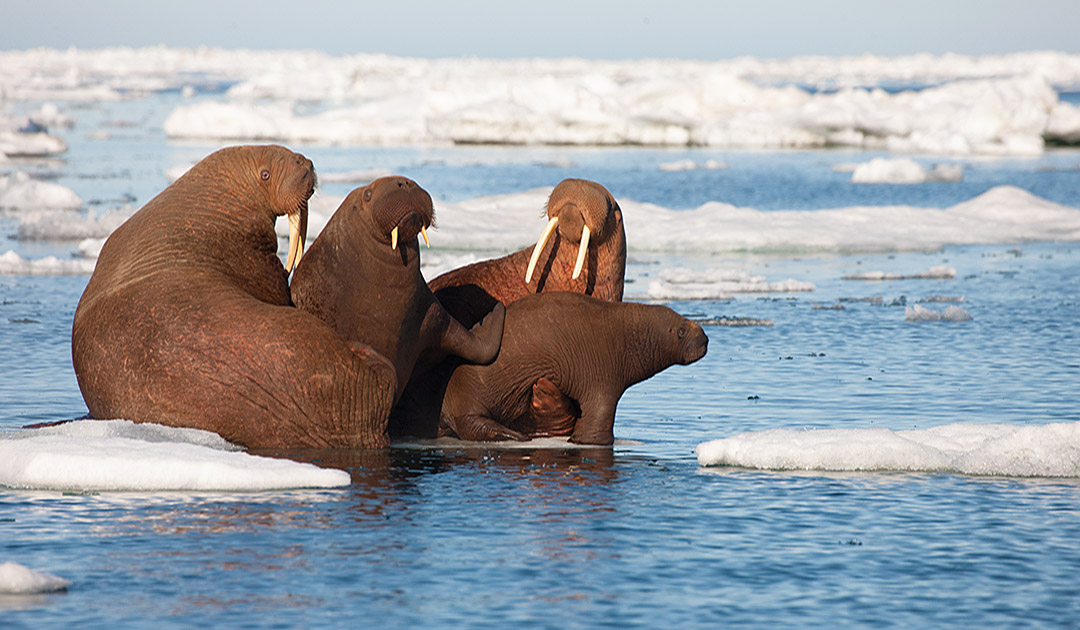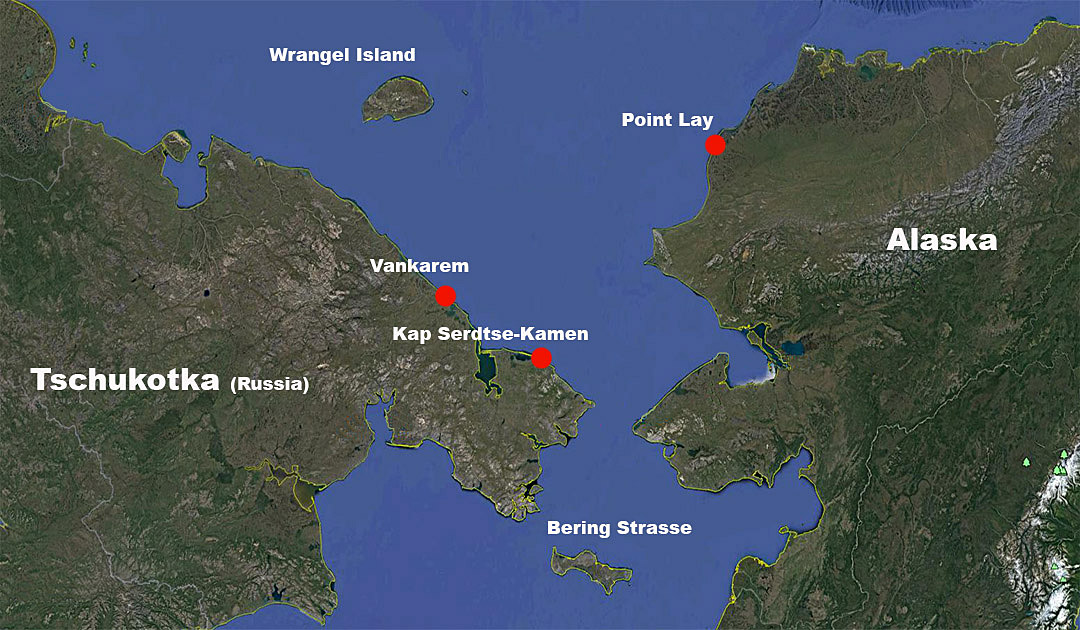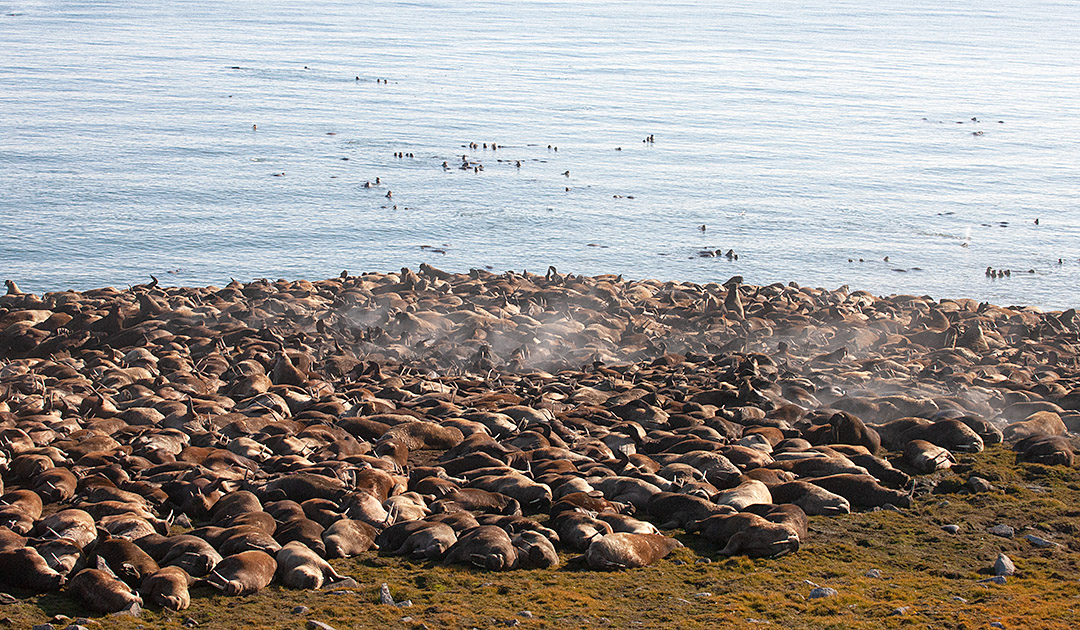
Pacific walruses started to gather earlier than usual on land, on a beach at the Chukchi Sea. The “U.S. Fish and Wildlife Service” in Anchorage received the report that on August 5, 5,000 animals had already been sighted on an barrier island near the Inupiat village of Point Lay.

“This is the earliest date such a large number of walruses have been reported ashore at Point Lay,” said Andrea Medeiro’s spokeswoman for the U.S. Fish and Wildlife Service. The first walruses had already arrived in July. The sea ice along North Alaska disappeared much earlier than usual this spring due to exceptionally high water temperatures. According to the “National Snow and Ice Data Center”, since 1981 an area of 400,000 square kilometers has been unavailable to Arctic marine mammals until the end of the summer.
The Pacific walruses in the Chukchi Sea, mostly adult females and their calves, use ice floes as a platform for feeding and resting. In the absence of ice, the walruses then gather on the beach of Point Lay. In recent years, 40,000 to 50,000 animals have been counted. Scientists say that this practice is a reaction to climate change and the retreat of sea ice.

These mass gatherings represent a danger as the walruses are further away from their preferred habitats for mussels, worms and other food. Furthermore, in such large aggregations, disturbances can cause stampede leading to animals being injured or trampled, especially the young. Last year, for the first time, two pilots of small planes were fined $3,000 each for getting too close to the walruses at Point Lay.

New protective measures in Chukotka
On the other side of the Bering Strait, the authorities have taken measures to protect the walruses. The government of Chukotka, the easternmost region of Russia, is planning to establish some new protected areas at Cape Serdtse-Kamen. The creation of the 4 square kilometre reserve follows other measures taken in recent years to protect the area and the walruses. The new walrus sanctuaries were created on the initiative of the Russian Geographic Society, the organization said in a statement.
“The need to create these protected areas has been discussed in scientific circles for several years. Their formation will bring Chukotka closer to the midpoint of the ranking of Russian regions by protected areas. It is also our small contribution to the fulfillment of Russia’s obligations under the signed UNESCO/UN Convention on the Conservation of the Biological Diversity of the Arctic and the Planet,” said a spokesman for the conservation organization in the statement.
Heiner Kubny, PolarJournal





